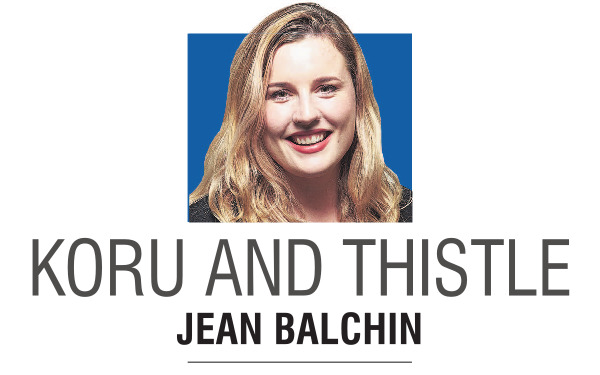
There is a sort of raw otherworldliness about the Highlands, with their towering mountains wreathed in mist, deep dark glens and silver lochs. The air is crisp with notes of pine and peat, and you can drive for miles without seeing a single living soul — save for the sheep.
Glencoe is one of my favourite spots in the Highlands. A steep-sided valley on the west coast of Scotland, the glen cuts a dramatic path from the northeast near the village of Glencoe and Loch Leven, southwest towards Rannoch Moor, with the A82 road running through its length. Three towering, rugged mountains loom over the glen — Beinn Fhada, Gearr Aonach and Aonach Dubh, known collectively as the Three Sisters of Glencoe.

I took my little sisters to Glencoe last September, along with my best friend Fidra. It was a moody, misty day, befitting a place so soaked in sorrow and memory.
On February 13, 1692, a grisly massacre took place at Glencoe. Around 120 government soldiers led by Captain Robert Campbell of Glenlyon arrived in Glencoe and were hosted by the MacDonalds for nearly two weeks, breaking bread and sharing wine with them under the Highland code of hospitality.
Then, early in the morning of the 13th, the soldiers turned on their hosts, and murdered 38 MacDonald men, women and children in their homes and in the bloody snow as they fled. The massacre began simultaneously at three settlements across the glen — Invercoe, Inverigan and Achnacon — but the MacDonalds were pursued over the glen and into the mountains, where many more of them perished from the elements.
The slaughter had been ordered by John Dalrymple, Scottish Secretary of State, ostensibly as punishment for the MacDonalds’ failure to swear allegiance to William of Orange by a government-imposed deadline. Following the Glorious Revolution of 1688, many Highland clans remained loyal to the deposed King James VII of Scotland (James II of England), and refused to recognise William III as their new sovereign.
In response, the government issued a proclamation in August 1691 promising a royal pardon to any clan chiefs who swore allegiance to William before January 1, 1692.
Anticipating defiance, the authorities prepared "letters of fire and sword" to authorise violent enforcement against those who failed to comply. Despite much initial hesitation, most clan leaders took the oath, after seeking relief from their earlier oaths to James Stuart, the deposed king in France.
Chief MacIain of Glencoe delayed his submission until the final day of the deadline, December 31, 1691. But upon arriving at Fort William, MacDonald discovered there was no official present to record his oath, so he was forced to travel to Inveraray, where he finally swore loyalty on January 6. While this delay was accepted by local officials, Dalrymple was having none of it. The attack at Glencoe was part of a larger goal — to pacify the Highlands, suppress Jacobite sympathies and break the power of clans perceived as disloyal to the crown.
The massacre at Glencoe shocked and horrified Scottish society, not only because of its brutality, but for the unmitigated betrayal of deeply held Highland values. Captain Campbell’s personal involvement was particularly wounding — he was related by marriage to some of the MacDonalds.
While the government brushed it aside after a brief inquiry and the resignation of John Dalrymple, the massacre helped galvanise support for the Jacobite cause in the decades that followed. Even today, Glencoe represents the wider suffering and betrayal of the Highlands — the historic Clachaig Inn in Glencoe bears a (tongue-in-cheek) reminder of this lasting bitterness with a sign on its door that reads: "No Campbells." (I doubt this rule is enforced, however).
There have been some fascinating archaeological excavations at Glencoe. In 2018, a team from the National Trust for Scotland began surveying several areas of the glen related to the massacre, and in 2019, they focused on the settlement of Achadh Triachatain, at the far end of the glen. The archaeologists found evidence that the settlement had been rebuilt after 1692 and occupied until the Highland Clearances of the mid-18th century.
In 2021 the National Trust completed a full-sized reconstruction of one of the buildings excavated at Achadh Triachatain using traditional techniques and materials. My sisters and I visited this building; it was sturdy, atmospheric and a welcome respite from the near-constant drizzle.
Only last year, a team from the University of Glasgow discovered a bent plaid pin, musket balls, pottery and coins at what is believed to be the house of MacDonald of Achnacon, the head man of the village (who narrowly escaped with his life in 1692). Who knows what other treasures are hidden there beneath the grass of Glencoe?
The ramifications of the Glencoe massacre have rippled through the centuries and will continue to do so. Glencoe is more than a beautiful place — it is a cautionary tale, a trope of fantasy literature, a warning, a legend, a nightmare for some.
It is a place where beauty and history meet, and I can’t wait to return.
• Jean Balchin is an ODT columnist who has started a new life in Edinburgh.










